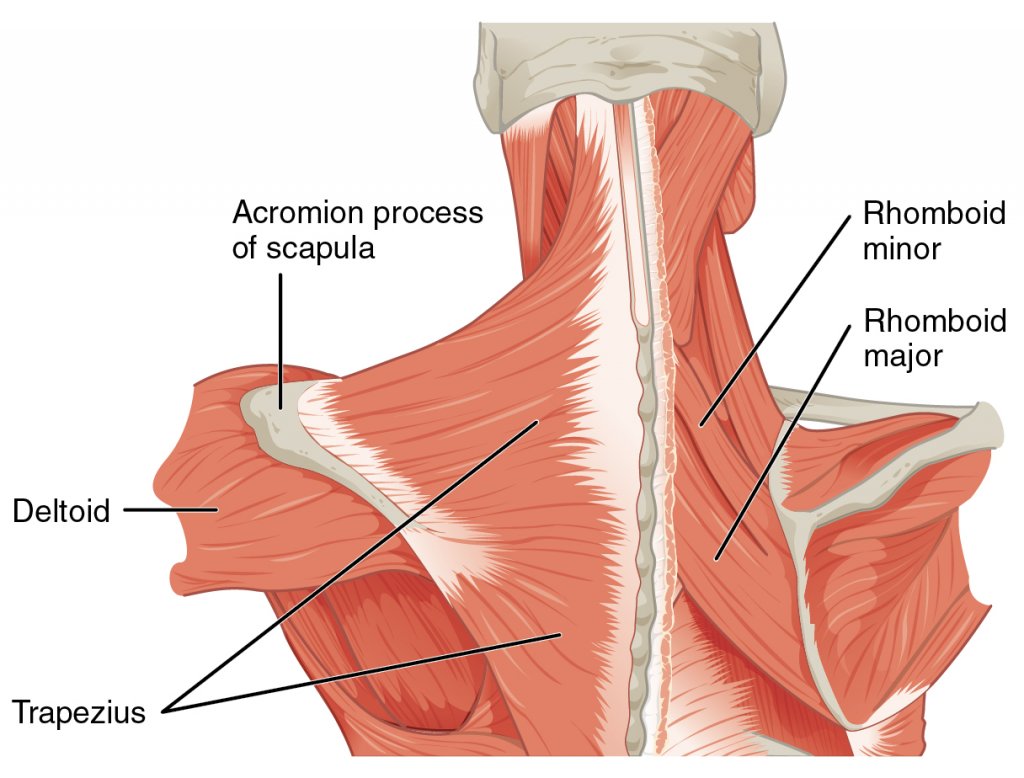This group can be divided into the superficial posterior axio-appendicular muscles, deep posterior axio-appendicular muscles, and the scapulohumeral muscles.
Superficial posterior axio-appendicular muscles
The superficial posterior axio-appendicular muscles are the superficial part of the extrinsic shoulder muscles. They include the trapezius and latissimus dorsi muscles.

Trapezius
The trapezius is a large, paired, triangular muscle extending from the neck to the shoulders and lower thorax, providing a direct attachment of the pectoral girdle to the trunk.
Its fibers are divided into three parts, each differs in actions at the physiological scapulothoracic joint between the scapula and thoracic wall:
- Descending (superior) fibers elevate the scapula (e.g., when squaring the shoulders).
- Middle fibers or when all parts work together: retract the scapula (i.e., pull it posteriorly).
- Ascending (inferior) fibers depress the scapula and lower the shoulder.
The left and right trapezius muscles together form a diamond or trapezoid shape, from which the
